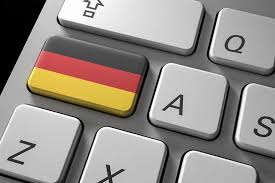Introduction
German translations require precision and a deep understanding of the language. To achieve a fluent and natural text, it is essential to understand grammar, context, and idiomatic expressions. In this article, we will explore the best tips for producing high-quality translations. Additionally, you will learn how to avoid common mistakes and improve text clarity.

Importance of Perfect German Translations
German is a language with complex grammatical rules and structures different from Spanish. A poorly done translation can change the meaning of the message. That is why it is crucial to know linguistic rules and adapt the content appropriately.
Tips for Accurate German Translations
Understand the Context of the Text
Each document has a specific purpose. Translating a legal contract is not the same as translating an advertisement. Before starting, it is essential to identify the tone and objective of the content. This helps in choosing the correct words and structures.
Avoid Literal Translations
Although German and Spanish have structural differences, a word-for-word translation can result in confusing sentences. Therefore, it is better to interpret the meaning of the message and adapt it to a natural German structure. As a result, the text will be clearer and easier to understand.
Use Idiomatic Expressions Correctly
Each language has phrases that cannot be translated literally. In German, many expressions have figurative meanings. Learning and applying them correctly makes the translation sound more authentic and natural.
Follow German Grammar Structure
German follows specific grammatical rules. It is important to know the correct word order in a sentence. For example, in subordinate clauses, the verb is placed at the end. Following these rules ensures a well-structured text.
Check Agreement and Spelling
German distinguishes between masculine, feminine, and neuter nouns. Additionally, all nouns are capitalized. Making mistakes in these aspects can affect text comprehension. Checking spelling and agreement is essential for an accurate translation.
Adapt the Tone and Style
Each type of text has a different tone. An academic document requires formal language, while an advertising article can be more dynamic. Adapting the style to the target audience enhances the effectiveness of the message.
Tools to Improve German Translations
Various tools can assist in the translation process:
- Bilingual dictionaries: Useful for understanding the exact meaning of a word.
- Spell checkers: Help detect grammar and spelling errors.
- Specialized glossaries: Facilitate translation in technical or specific fields.
- Artificial intelligence platforms: Improve accuracy but always require manual review.
Common Mistakes in German Translations
If the context is ignored, the translation may lose its intended meaning. When grammatical order is incorrect, the text can become confusing. Since false cognates can be misleading, they should be carefully checked. If idiomatic expressions are not adapted, the message might sound unnatural. Because nouns require capitalization in German, omitting it can cause readability issues. Unless agreement and spelling are reviewed, the translation may contain errors.
Importance of Proofreading and Editing
Reviewing a translation ensures accuracy and fluency. Reading the text aloud helps identify errors and improve clarity. If possible, asking a native speaker to review the content helps perfect the final quality. Additionally, comparing the text with the original version ensures that the message has been accurately conveyed.
Conclusion
In conclusion, producing professional German translations requires practice and strong language skills. Applying these strategies improves text quality and facilitates effective communication. With a good understanding of context, proper use of expressions, and careful revision, achieving clear and precise translations is possible.
Finally, if you need to know who to hire, visit Translation Agency in Madrid with Max Traducciones.



